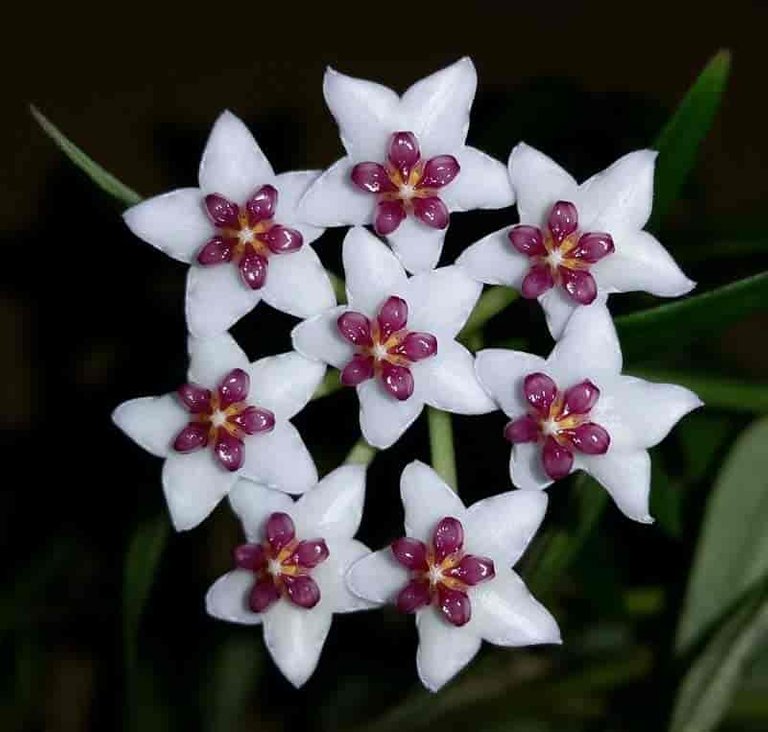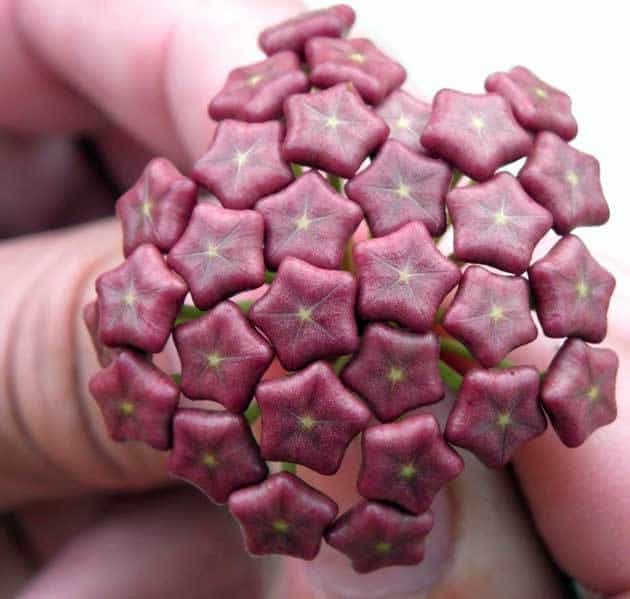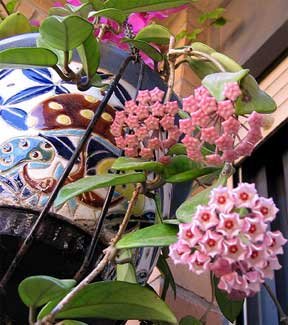The name “Hoya” honors Thomas Hoy, gardener to the Duke of Northumberland and the first to bring this superb house plant into prominence.
Native to southern India, highly prized, and the subject of legend. You’ll find Hoyas throughout eastern Asia to Australia and classified botanically in the asclepias (milkweed) family.
The exact number of species is a mystery. Bailey’s Standard Cyclopedia of Horticulture estimates there are 100 species. Listed at the end of the article are over 550 recoginized species. The most common species, and the one most often seen and grown as a houseplant is Hoya carnosa and Hoya carnosa variegata.
Thick leaves of green, rimmed with red and white, and a waxen texture from which it derives the nick-name “wax plant.”

Native to tropic and subtropical regions, most hoyas do equally well in homes, in protected areas or a greenhouse. The hoyas that vine and climb do so by means of small stem rootlets, when untrained, they form a thick mat. Several species make beautiful baskets and look great on a small trellis.
Lighting – a north window is a good location. Although the plants do not require direct light, they would not do well away from a window, unless you prefer to grow them under fluorescent grow lights. Supply all but the hottest sun.Soil – a moist, well-drained, light soil – African Violet soil with some added perlite – is a good growing medium.
Watering – keep the soil moist in spring and summer, dry but not to the point of shriveled foliage in winter. In dry climates more frequent watering may be necessary.

Some like to mist the leaves frequently, to clean them and increase humidity… but NOT when the plant is budding or in flower.
Temperature – give them medium (50 degrees) to warm temperatures during the growing season—spring and summer. The plants go semi-dormant in winter.
Fertilizer – In spring hoyas react favorably to feeding. Fertilize using a liquid balanced food, about every four weeks, three or four times during the growing season will produce a vigorous growth. Withhold food during the winter. More on applying liquid plant foods here.
